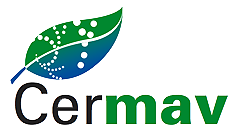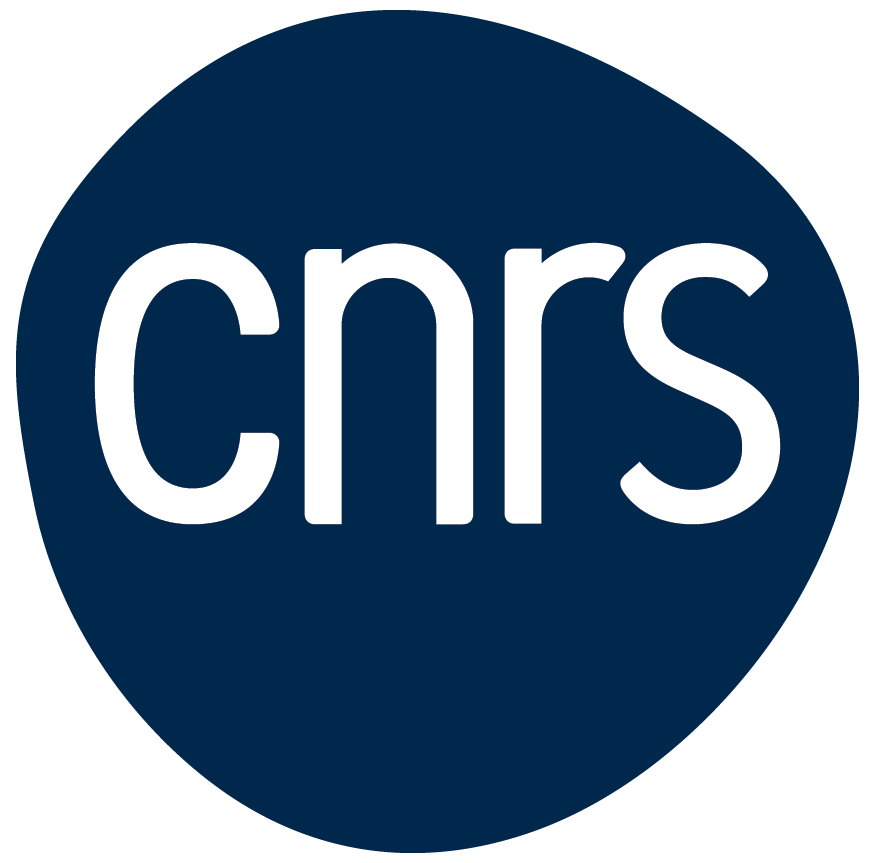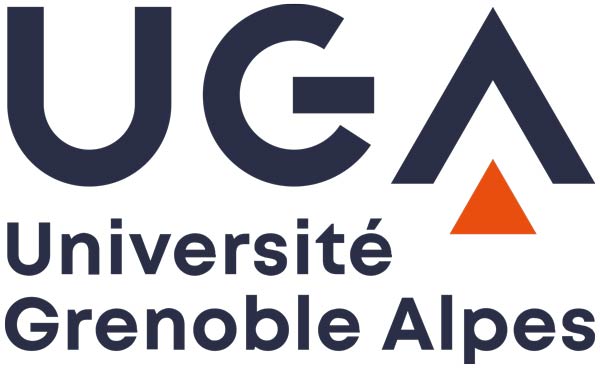Francois Bonnardel’s thesis defense on February, 8th 2021
Such thesis is entitled “Bioinformatic study of lectins: new classification and prediction in genomes” and is co-directed by Dr. Anne Imberty (Cermav) and Dr/Prof. Frédérique Lisacek (Swiss Institute of Bioinformatics). Click on the title for more information.
Find our work in the CNRS 2020 chemistry news booklet
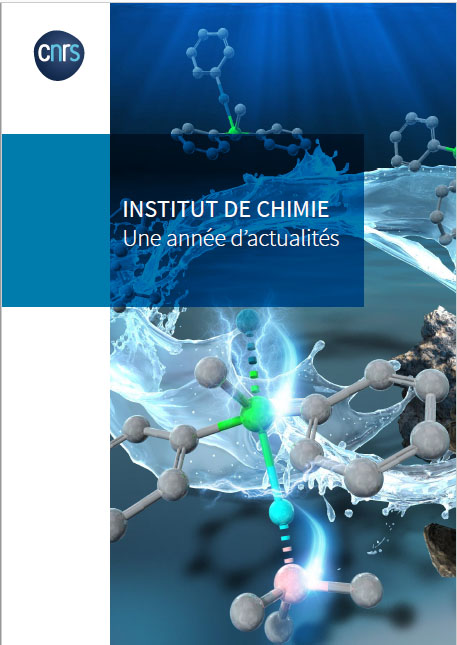
Click on the title to access the document
Marie Carriere’ s thesis defense on January 25th, 2021
Such thesis is entitled “Design, characterization and application of glyconanoparticles in (bio) electrochemistry”. It is executed in collaboration with the Département de Chimie Moléculaire (DCM), and the CEntre de Recherches sur les MAcromolécules Végétales (CERMAV) (co-supervised by Redouane BORSALI -Director of Research at CNRS). Click on the title for more information.
Bottom-up Construction of Xylan Nanocrystals in Dimethyl Sulfoxide
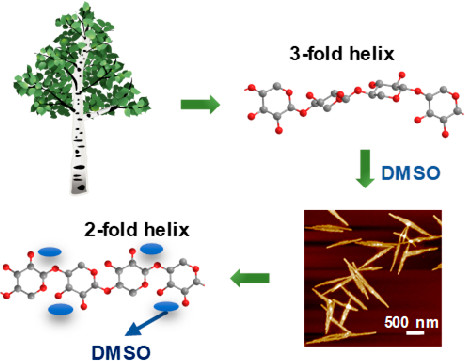
In collaboration with Aalto University and VTT (Finland), we developed a new hemicellulose-based nanocrystal composed of crystalline complex of xylan and dimethyl sulfoxide. The detailed structural characterization revealed that the xylan molecules are packed in the nanocrystals with a two-fold helical conformation which is different from the three-fold helical conformation found in the pure xylan crystal. The morphology of nanocrystals was found to be adjustable through changing the crystallization conditions. This work will serve as a starting point to understand the controlled assembly of hemicelluloses to discover their full application potential. Click on the title for more information.
Carbohydrate-attached fullerene derivative for selective localization in ordered carbohydrate-block-poly(3-hexylthiophene) nanodomains
Towards photovoltaic devices made from highly nano-organised carbohydrate block copolymers. Click on the title for more information.
Non‐Carbohydrate Glycomimetics as Inhibitors of Calcium(II)‐binding Lectins
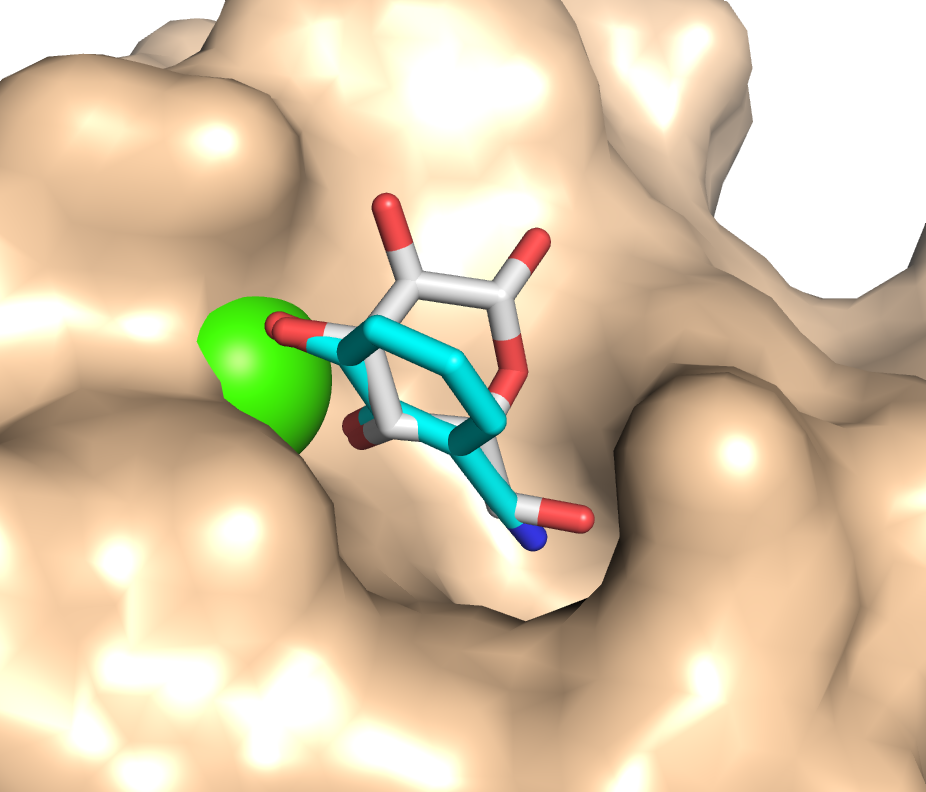
Search for new inhibitors of bacterial infection is a priority for fighting antibiotics resistance, and this is the topic of a french-german ANR-DFG project. We screened for libraries of non-carbohydrate ligands for binding to Pseudomonas aeruginosa calcium-dependent lectins, and identified catechol derivatives as interesting lead. The first co‐crystal structure of a non‐carbohydrate inhibitor in complex with a bacterial lectin clearly demonstrates the catechol mimicking the binding of natural glycosides with LecA. Interstingly, catechol derivatives also bind to human C-type lectins, opening a wide range of applications. Click on the title for more information.
Happy New Year!

Both CNRS and Cermav wish you a happy New Year and all the best for 2021. Click on the title to watch the video.
Season’s Greeting
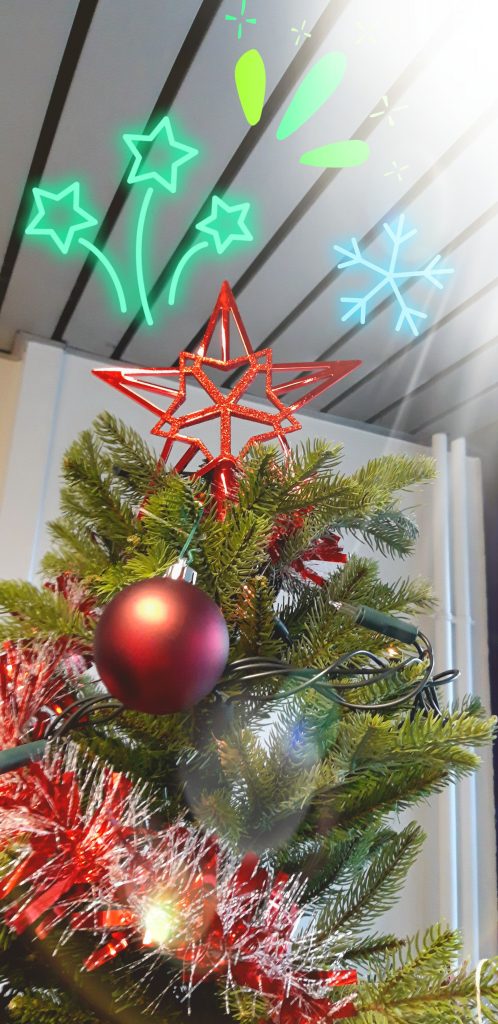
Cermav wishes you a happy holidays!
GAG-DB, the New Interface of the Three-Dimensional Landscape of Glycosaminoglycans
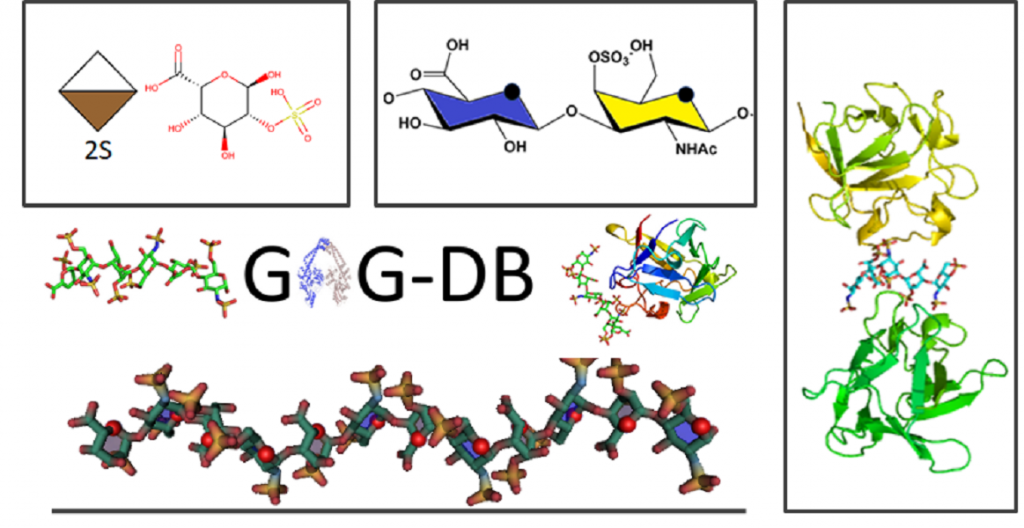
Glycosaminoglycans (GAGs) are complex linear polysaccharides. GAG-DB is a curated database that classifies the three-dimensional features of the six mammalian GAGs (chondroitin sulfate, dermatan sulfate, heparin, heparan sulfate, hyaluronan, and keratan sulfate) and their oligosaccharides complexed with proteins. GAG-DB provides detailed information on GAGs, their bound protein ligands, and features their interactions using several open access applications. Binding covers interactions between monosaccharides and protein monosaccharide units and the evaluation of quaternary structure. Click on the title for more information.
Polymorphism of V-amylose complexed with aliphatic diols
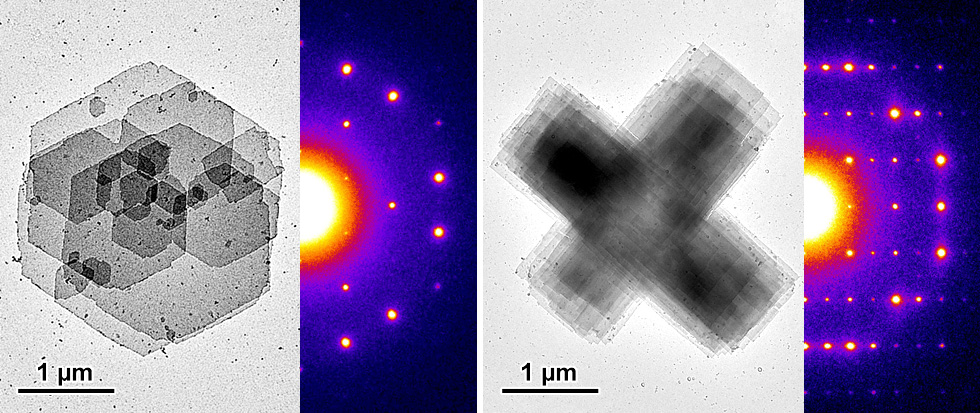
We have published an article in the journal Polymer about the structure of inclusion compounds prepared by crystallizing amylose in the presence of a series of diols. Several molecular models have been proposed based on electron and X-ray diffraction data, and structural transitions have been identified during the drying of the crystals. Click on the title for more information.
Misincorporation of Galactose by Chondroitin Synthase of Escherichia coli K4: From Traces to Synthesis of Chondbiuronan, a Novel Chondroitin-Like Polysaccharide

We published an article in the journal BioMolecules dealing with the synthesis of chondroitin in a recombinant strain of Escherichia coli. The study points out the fact that in absence of UDP-GalNAc which is one of the enzymatic precursors of chondroitin synthesis, chondroitin synthase KfoC incorporates galactose leading to the synthesis of a new polysaccharide named chondbiuronan. Click on the title for more information.
Nanocellulose based-material for wound dressing
A review article is presented by Clémentine Darpentigny and Bruno Jean, taking up elements of Clémentine Darpentigny’s thesis. It aims to provide an overview of cellulose-based nanomaterials and their potential use for wound dressing applications.
PhD Glyco@Alps symposium day
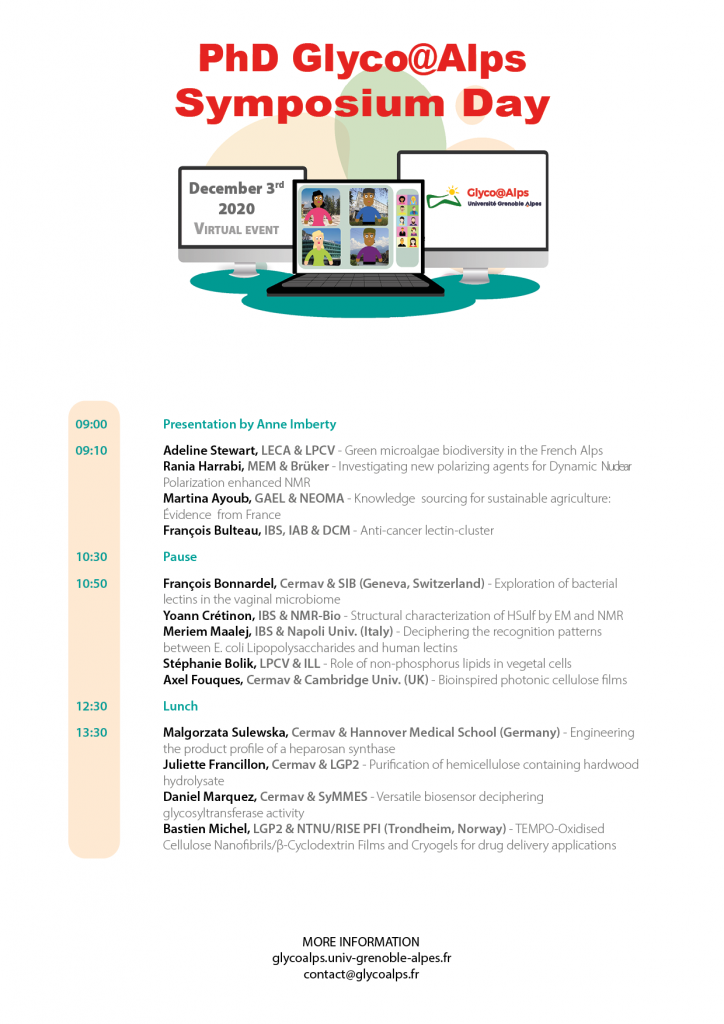
Cermav will participate in the PhD Glyco @ Alps symposium day. Click on the title to find out more.
The architecture of starch blocklets follows phyllotaxic rules

We have just published in Nature-Scientic Reports, the results of our collaboration with the Polytechnic University of Marche (Italy) and the ESRF – European Synchrotron Radiation Facility in Grenoble (France), which is related to the application of the rules of starch grain phyllotaxis that leads to a new model of its architecture and the structure of amylopectin. Click on the title for more information.
Axel FOUQUES’ s thesis defense on December 16th, 2020
This thesis is entitled “Bioinspired photonic cellulose films” and is co-supervised by M. Laurent HEUX, CNRS Researcher Director at Cermav- UPR5301, and Mrs Silvia VIGNOLINI, Professor at Cambridge University (United Kingdom)
Rubal RAVINDER’ s thesis defense on December 7th, 2020
This thesis is entitled “Synthesis of (cyclo)maltooligosaccharides-based sulfated glycosaminoglycan mimetics and their interaction with heparin binding growth factors” and is co-supervised by M. Sami HALILA, CNRS researcher at Cermav- UPR5301, and M. Romain VIVES, Research Director at Institut de Biologie Structurale – UMR5075.
Cermav and Institut Carnot Polynat

Cermav is the coordinator of the Carnot PolyNat Institute which brings together eight research centers from the campus in order to innovate together with the industrial world in the field of eco-design of bio-based materials. Click on the title for more information.
Fucosylated ubiquitin and orthogonally glycosylated mutant A28C: conceptually new ligands for Burkholderia ambifaria lectin (BambL)
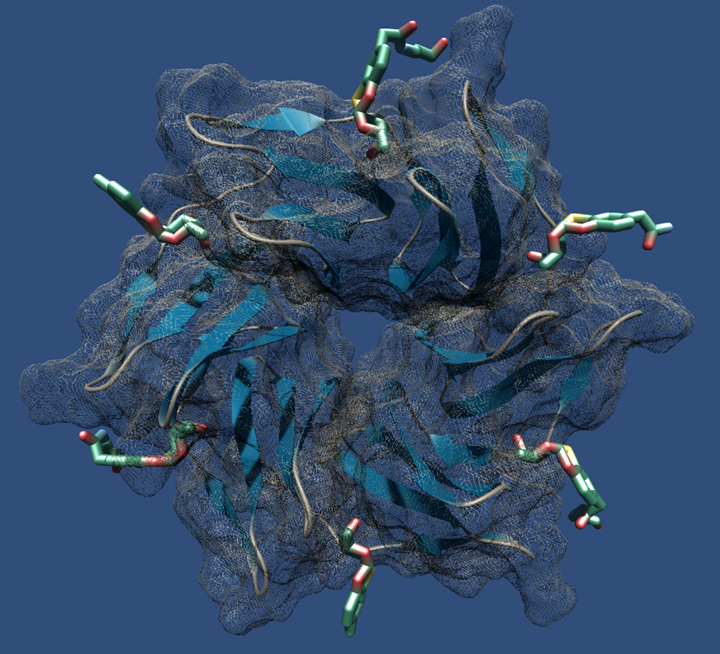
Our new article published in Chemical Science report on developing conceptually new inhibitors towards receptors of lung pathogens with high resistance to antibiotics. The BambL lectin from Burkholderia bind to fucose present on lung tissue. In collaboration with colleagues in Firenze, we developed high affinity ligands for BambL able to attach to adjacent sites on the lectin with high affinity and high specificity. A small protein scaffold has been functionalized with several fucose analogs, resulting in strong avidity towards BambL. In addition, rhamnose, a sugar able to modulate the activities of our white cells, was also grafted on the scaffold in order to boosta a better response to infection./ Figure: Crystal structure of BambL lectin in complex with new fucose based glycomimetics (X-ray structure by Dr. Sakonwan Kuhaudomlarp)
Transverse axes day – November 2, 2020
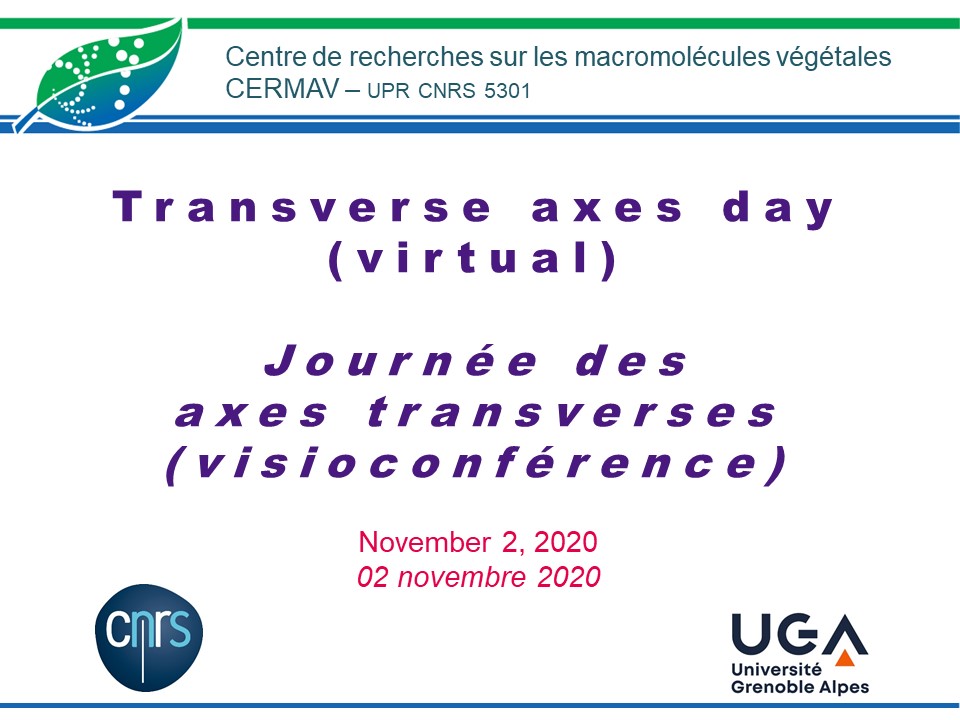
This year, we organize the days of Cermav transverse axes in a revised format to respect the sanitary rules. Therefore, the members of Cermav meet virtually to attend the presentations of our PhD students. Click to access the program.
Multifunctionalization of cellulose microfibrils through a cascade pathway entailing the sustainable Passerini multi-component reaction
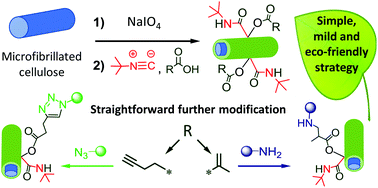
As a follow-up of the Julien Leguy’s PhD work (at Cermav) and in collaboration with the Polymer Materials Engineering laboratory (IMP) – Joint Research Unit n ° 5223 – CNRS – Université de Lyon – INSA LYON, we have published in the Green Chemistry journal a proof of concept of the advanced dual chemical functionalization of cellulose microfibrils through an eco-responsible route.
Competing Molecular Packing of Blocks in a Lamella-Forming Carbohydrate-block-poly(3-hexylthiophene) Copolymer
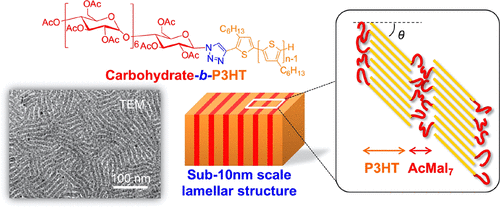
We just published in Macromolecules in collaboration with our colleagues from NTU (Taipei, Taiwan) and Hokkaido Univ (Sapporo, Japan) a study on carbohydrate-based copolymers for promising application in organic photovoltaic (OPV) -Sub_10nm domain spacing
Rapid access to discrete and monodisperse block co-oligomers from sugar and terpenoid toward ultrasmall periodic nanostructures
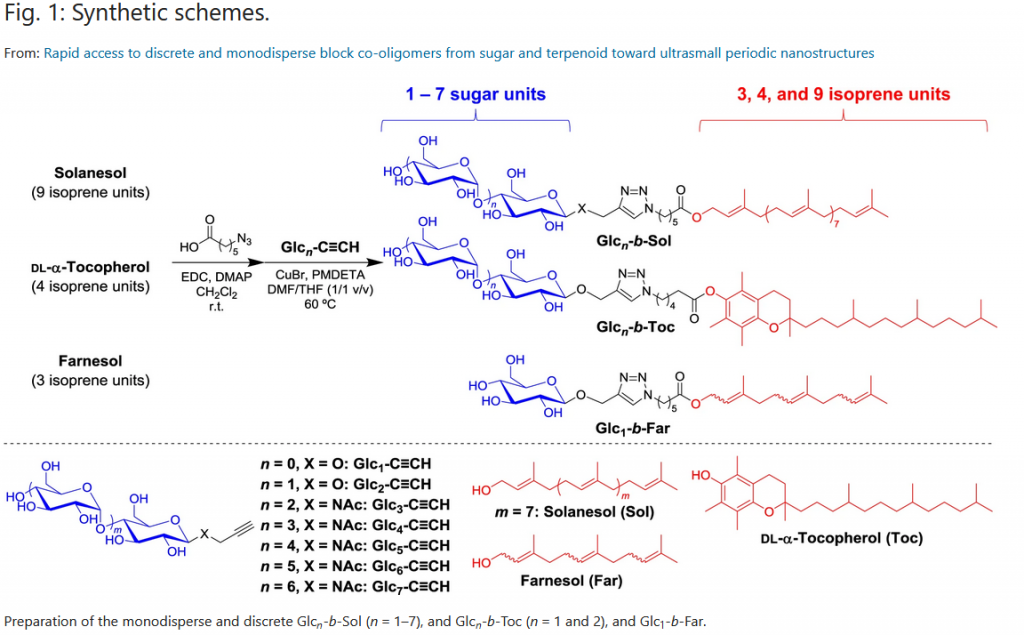
We just published in Nature Communications Chemistry in collaboration with our colleagues at Hokkaido Univ (Sapporo, Japan) a study on carbohydrate-based copolymers for nanolithography – a major breakthrough (4nm resolution) never attained before
Raphaël MICHEL joins Cermav as a CNRS research scientist (“Chargé de recherche CNRS”)
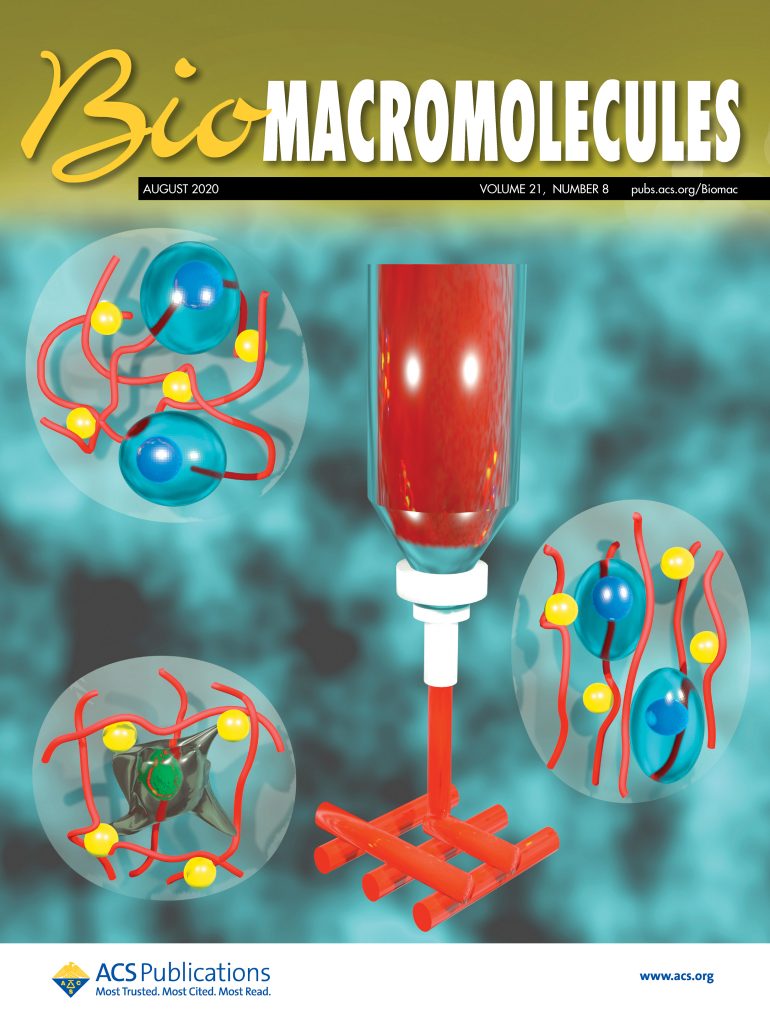
Raphaël MICHEL is the laureate of CNRS national entrance examination. More information on his career and his research project at Cermav./ Image caption: Cover of Biomacromolecules (Volume 21, Number 8) featuring the review article by Raphaël MICHEL and Rachel AUZÉLY –VELTY on composite biomaterials for tissue-printing.
Fangbo Lin’ s thesis defense on November 10th, 2020
This thesis is entitled “Regioselective modification of cellulose nanocrystals: synthesis, assemblies and functional properties” is co-supervised by M. Bruno JEAN (CNRS researcher and team leader at CERMAV).
